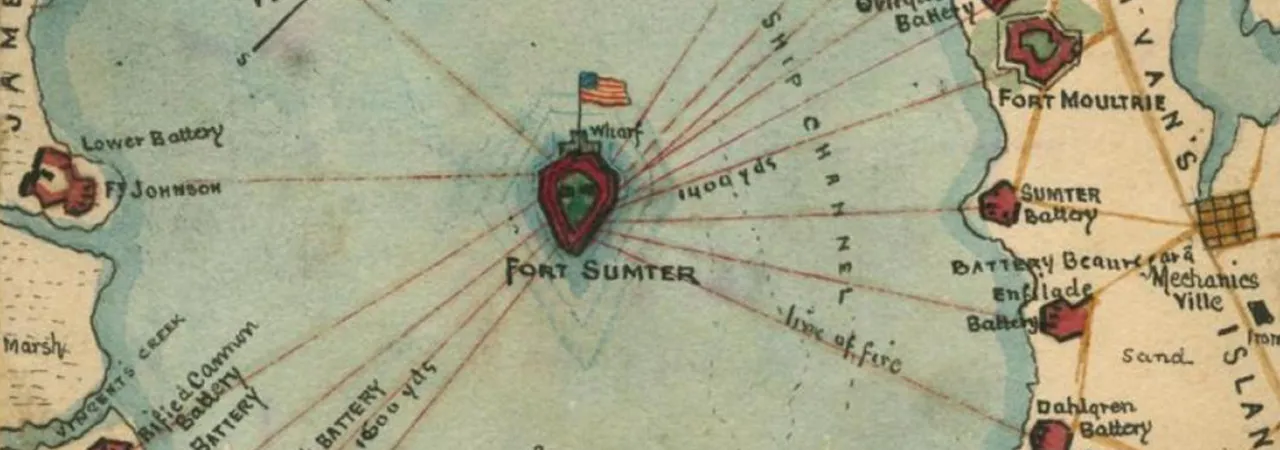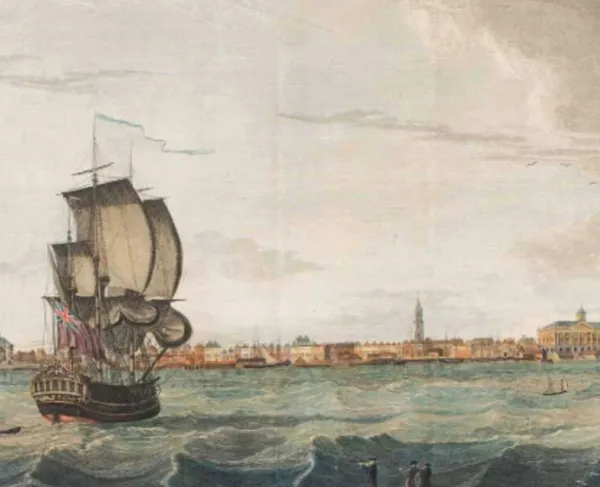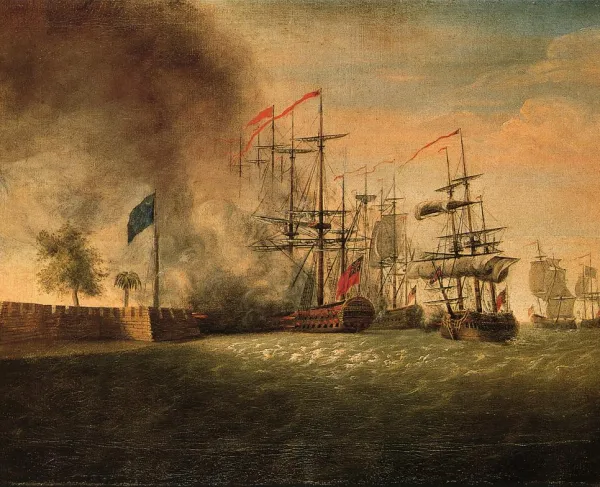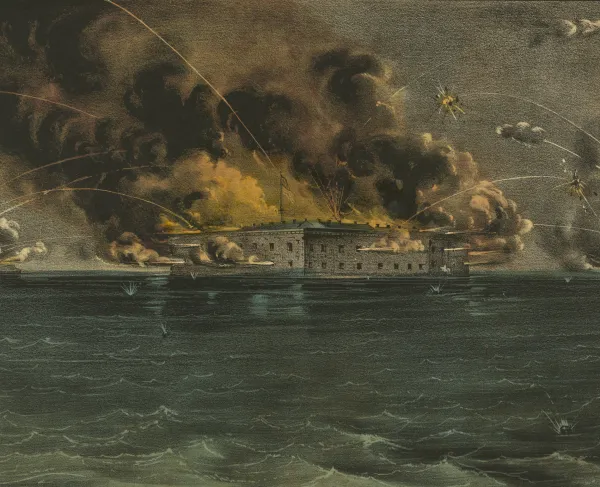
Few sites are more synonymous with the American Civil War than Fort Sumter. Named for the Revolutionary War hero Thomas Sumter, the United States government began construction on Fort Sumter in 1829. It was part of the third system fortifications built to defend the American coastline from foreign attack. The site selected was a sandbar near the entrance to Charleston Harbor that played an important role in the 1776 Battle of Sullivan’s Island. British ships ran aground on the sandbar during that battle, taking them out of action, which helped lead to a Patriot victory.
The man-made island was created on the sandbar. Seventy thousand tons of granite was used to create the island, and the fort was built on top of that. By April of 1861, the fort was still under construction and was an imposing fortress in the harbor. It was designed to house 650 men and 135 cannons. It had five-foot-thick brick walls that towered fifty feet high with three levels of artillery emplacements. Inside were wooden officers’ quarters, enlisted men’s barracks, and a brick powder magazine. The range of artillery at that time being approximately one mile, the cannons from Sumter and Moultrie commanded the entrance to the harbor.
On December 20, 1860, South Carolina seceded from the United States following Abraham Lincoln’s election as President of the United States. At that time, the only federal troops in Charleston harbor were about 85 men under the command of Major Robert Anderson, and they were stationed at Fort Moultrie. Feeling like he was in an indefensible location, Anderson made the decision on December 26, 1860, to spike the cannon at Moultrie, burn the carriages, and move his command across the harbor and into the unfinished Fort Sumter. South Carolina militia quickly took over all the other forts in the harbor and began training artillery on Fort Sumter.
President James Buchanan attempted to resupply the isolated garrison by sending a ship, the Star of the West, to their aid. However, Citadel military college students stationed on Morris Island fired on the ship. The ship fell back without returning fire, and the standoff in the harbor continued. After six more Deep South states seceded from the Union, these Southern states formed the Confederate States of America and created their government and took charge of the situation in Charleston Harbor. On March 4, 1861, Abraham Lincoln was inaugurated president of the United States. He refused to acknowledge the legitimacy of states’ secession or the sovereignty of the Confederate States. With Anderson’s garrison running low on supplies, Lincoln decided to send an armed fleet to resupply Fort Sumter.
As the nation watched the tense standoff in Charleston Harbor, Southern diarist Mary Chesnut summed it up: “There stands Fort Sumter, and thereby hangs peace or war.” In the early morning of April 12, 1861, the Confederates gave Anderson an ultimatum to evacuate or be fired upon. Anderson replied that he would stay until he ran on supplies three days later. The Confederates informed him they would open fire.
At 4:30 a.m. the first shot of the American Civil War was fried from a 10-inch mortar at Fort Johnson. The mortar shell arced over Fort Sumter and exploded, a signal for all the Confederate artillery to open fire on the fort. Both sides fired at each other over the course of 34 hours.
Finally, with the buildings in the fort burning and with no prospect of victory, Anderson decided to surrender to the Confederates.
Anderson and his men were able to take their flags and return to the North. In the Deep South the Confederate victory was hailed as an important declaration of their independence from the Union. In the North, the firing on Fort Sumter was viewed as an assault on the American Union and rallied thousands to the defense of the American flag. Lincoln’s call for volunteers to invade the South forced the Upper South states to secede and join the Confederacy as well.
Now in Confederate hands, Fort Sumter remained a powerful symbol. It became a target for the Union armies. On April 7, 1863, the Union returned to the harbor and attempted to retake Sumter, but they were driven back. Beginning in July of 1863, the Union began to lay siege to Charleston and Fort Sumter. By September of 1863, the Union captured all of Morris Island. The rifled artillery opened up on Fort Sumter less than a mile away. The Union fired more than seven million pounds of metal at the fort. The bombardment lasted on and off for 587 days. The brick walls of the fort were reduced to rubble. But as they continued to bombard the fort it only made it stronger as the rubble became essentially a massive earthwork. The Union attempted to land troops on the island fort but were repulsed.
Finally, Charleston became untenable with General William T. Sherman’s army marching through central South Carolina. On February 17, 1865, the Confederates evacuated Charleston and Fort Sumter, and the Union retook both. On April 14, 1865, four years to the day that Major Robert Anderson had lowered the American flag and left Fort Sumter, now General Robert Anderson returned for a ceremonial re-raising of the American flag on the battered remnants of Fort Sumter.
After the Civil War, Fort Sumter continued to be used by the military and as a navigational beacon. In the 1890s, a large Endicott battery was constructed inside the old fort. The military continued to use the fort until it was decommissioned after World War II in 1947 and transferred to the National Park Service, which preserves and interprets the site today. Visitors to Fort Sumter can take a boat ride out to the fort, visit a museum in the fort and learn about the important Civil War history of the site.






